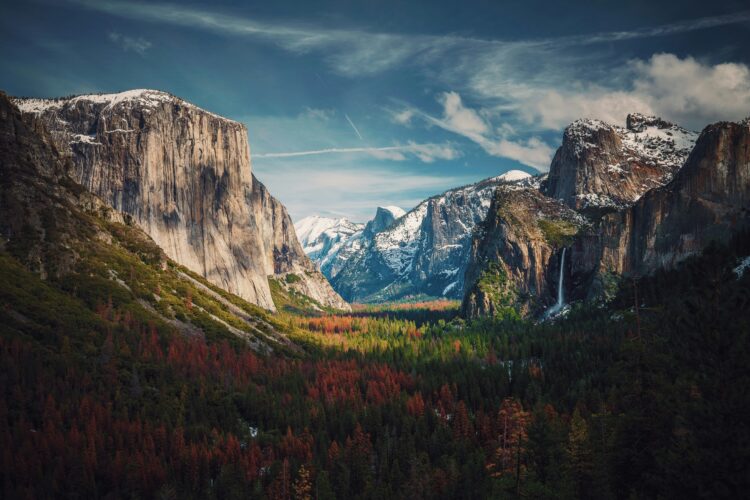I was scrolling the social media platform Threads when I happened upon one of those ledes that makes you keep reading. Which is what I did — through 5,000 words of story about problematic business practices at one of America’s most beloved national parks.
The story, published Aug. 6, 2024, by Bloomberg.com’s magazine, Businessweek, was by Laura Bliss. She drew readers deep into the wonder of Yosemite National Park as a way to investigate complaints against Aramark, the company that contracts to manage the park’s many concessions. The straightforward headline: “Parks and Degradation: The Mess at Yosemite.”
Here’s the lede:
A COUPLE OF MILES PAST THE WESTERN ENTRANCE TO Yosemite National Park, visitors pass from California into a postcard. The road opens to a majestic view of Half Dome, El Capitan and Cathedral Rocks —celebrity peaks if ever there were — which form the towering walls of Yosemite Valley. On the pine-scented floor of John Muir’s mountain mansion, the Merced River flows gently by the side of the road as signs point toward trailheads and tourist destinations. Not far from Curry Village, a cluster of tent cabins and eateries at the eastern end of the road, is a section of employee housing known as the Stables. It was there that Erin Rau found herself wrapped in a sleeping bag one broiling afternoon last summer, wondering whether she was about to die.
It was powerful and compelling, enough so that I created a Bloomberg account to continue reading it. Then I took note at the story craft at work:
The story begins with a description of the vista a visitor encounters when entering the western end of Yosemite. It is straightforward — almost spare — which lets the unparalleled beauty of the place do the work. The writerly embellishments are few and effective: visitors passing from California into “a postcard;” “celebrity peaks;” the “mountain mansion” of early naturalist John Muir. I was transported to that very road. I didn’t know what the story was about yet, but I could see the place as if I was there. We’ve almost all seen photos of Yosemite’s standout features, or watched documentaries about the park, or perhaps have been lucky enough to see them in person. Bliss leaned into a description that was simultaneously familiar and aspirational: Who among us has actually scaled El Capitan except in our wildest dreams?
Like good mystery novels or investigative stories, the lede also includes a hint or foreshadow, this with that opening paragraph leading to a last sentence that introduced a young park employee. “It was there,” Bliss wrote, that the woman, wrapped in a sleeping bag, felt so sick she worried she might die. I happen to love mysteries and thrillers. I was hooked. Bliss had achieved a narrative writer’s greatest goal, which is to make a reader keep reading to find out what happened.
It turns out that the worker, Erin Rau, along with her roommates and other workers, had complained many times about working conditions, including an infestation of deer mice in their sleeping quarters and in other buildings. Deer mice can carry hantavirus, a rare but potentially fatal disease. A roommate drove Rau 90 minutes to the nearest hospital, where she tested positive for the virus.
The mini-narrative of Rau’s situation is a mini-narrative that launches the rest of the story. The hook is set. We want to know more — about Rau, about conditions at the park, about who was responsible and about whether anyone will be held to account. It’s only in paragraph five when we are introduced to Aramark, a private company contracted to manage concessions at Yosemite. The story goes on to describe many documented complaints, from bedbugs to chemical spills to conditions that resulted in the deaths of several bears.
The bulk of the story probes the myriad problems with Aramark, whether and how the National Park Service is attempting to hold them accountable, and steps by Congress to make its displeasure of park management known. It details persistent problems with Aramark’s management of restaurants, bars, hotels, inadequate staffing and more.
As long as this story is, it doesn’t read like one. The deep reporting is woven through with descriptions of a single, special place; the unspooling of discoveries that keeps the reader moving; the overall chronicle raises larger issues to reveal weak environmental policies, corporate greed and lack of consequences that plague America’s most precious resources.
* * *
Liz Seegert is an award-winning freelance journalist who specializes in covering health care and related issues. Her work has written for magazines, newspapers, broadcast and digital outlets, and government, non-profit, corporate and educational clients.



